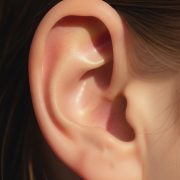
Ear shape is more than a physical characteristic—it can play a crucial role in pediatric development. The structure and formation of a child’s ears may offer important clues about their overall health and developmental progress. Variations such as protruding or asymmetrical ears can sometimes indicate underlying genetic conditions or developmental concerns.
Early observation by parents and healthcare professionals is key. Unusual ear shapes may warrant further evaluation, as they can be associated with syndromes that impact growth, learning, or social functioning. Recognizing these signs early enables timely intervention.
Understanding the developmental significance of ear shape supports informed decision-making about potential medical or therapeutic needs. Early detection ensures children receive the right care to support healthy growth and development.
The Significance Of Ear Structure In Detecting Developmental Needs
The shape and structure of a child’s ears can offer valuable insight into their overall development. In some cases, differences in ear appearance may be linked to genetic conditions or developmental delays. These subtle signs may prompt further evaluation, especially when paired with other early indicators of conditions like autism spectrum disorder. When concerns arise, early intervention options such as ABA therapy tailored for children with autism can make a meaningful difference in supporting communication, behavior, and social development.
By including ear structure in a broader developmental assessment, healthcare providers can help families take proactive steps toward getting the right support at the right time. Early attention to these cues lays the groundwork for healthier outcomes and a stronger foundation for growth.
The Connection Between Hearing And Early Development
Hearing plays a vital role in a child’s early development, directly impacting language acquisition, cognitive growth, and social interaction. From birth, infants begin responding to sounds, helping lay the foundation for speech and communication. This early auditory input is essential for building the neural pathways that support language development.
When hearing impairments go undetected, children may experience delays in speech and language, often leading to challenges in learning and socialization. Early identification is key—routine hearing screenings allow for timely diagnosis and intervention, minimizing the risk of long-term developmental setbacks.
Given the strong link between hearing and overall development, a multidisciplinary approach is crucial. Collaboration among audiologists, speech-language pathologists, and pediatricians ensures comprehensive care and supports each child in reaching their full potential.
Identifying Behavioral Differences In Children
Behavioral differences in children can serve as early indicators of developmental needs. Observing a child across various settings—such as at home, in school, and during social interactions—can reveal patterns that may warrant further evaluation. Behaviors like limited social engagement, delayed communication, or repetitive actions often signal the need for additional support.
Parents and educators are essential in identifying these differences. By consistently monitoring and documenting behaviors, they provide valuable information that helps professionals assess the child’s needs and design targeted interventions.
Early recognition and intervention are critical for promoting positive developmental outcomes. Evidence-based approaches like Applied Behavior Analysis (ABA) therapy can be especially effective, helping children build essential skills and enhance their overall functioning in everyday life.
How Early Hearing Loss Can Impact Developmental Milestones
Early hearing loss can have a profound effect on a child’s ability to meet key developmental milestones. Because hearing is essential for language acquisition, undetected hearing issues may lead to delays in speech, learning, and social interaction.
Children affected may face difficulties with vocabulary, sentence construction, and understanding complex instructions—challenges that can impact both academic performance and peer relationships.
Timely intervention, including the appropriate use of child-friendly hearing aids, can greatly support language development and cognitive growth. Encouraging regular hearing screenings and prompt access to treatment ensures children receive the support they need for healthy communication and developmental progress.
Autism And Its Link To Ear Shape And Hearing
Research indicates a potential link between ear shape, hearing, and autism spectrum disorders (ASD). Some studies suggest that children with ASD may exhibit distinctive ear shapes or sizes, which could serve as physical markers for early identification. Additionally, atypical auditory processing is often observed in children with autism, affecting their ability to interpret sounds and language.
Understanding these connections aids in the early detection and diagnosis of autism. By recognizing physical and auditory signs, parents and clinicians can seek early interventions that improve outcomes for children on the spectrum. ABA therapy is one such intervention that has proven effective in addressing the behavioral and communicative challenges associated with autism.
The exploration of ear shape and hearing about autism underscores the importance of a comprehensive diagnostic approach. Combining physical assessments with behavioral evaluations ensures that children receive holistic care tailored to their unique developmental needs.
Introduction To Structured Behavior Therapy For Children
Structured behavior therapy is a key approach for addressing developmental and behavioral challenges in children. Rooted in evidence-based methods, it targets positive behavior reinforcement and skill-building. Applied Behavior Analysis (ABA) is a leading form, especially effective for children with autism, ADHD, and related conditions. By tailoring interventions to each child’s needs and involving caregivers, this therapy can improve communication, social interaction, and academic success.
Exploring ABA Therapy For Developmental Needs
ABA therapy is a structured, individualized approach that uses positive reinforcement to help children with developmental needs, especially autism, build essential skills. It begins with a detailed assessment, followed by a customized intervention plan targeting specific goals. Therapists regularly adjust strategies to match the child’s progress. Parental involvement is crucial, as reinforcing techniques at home ensure consistency and enhance outcomes.
Surgical Options For Protruding Ears: An Overview Of Otoplasty
Otoplasty is a surgical procedure designed to correct protruding or misshapen ears, improving both appearance and function. While often performed for cosmetic reasons, it can also address emotional and social challenges children may face due to their ear shape. The procedure reshapes ear cartilage to create a more natural, symmetrical look and is typically done in children as young as five, when the ears are more fully developed. Parents considering otoplasty should consult with qualified surgeons and weigh the potential benefits for their child’s confidence and social well-being.
How Otoplasty Can Aid In Pediatric Development
Beyond cosmetic benefits, otoplasty can play an important role in a child’s development. Children with prominent ears may face teasing, which can affect their self-esteem and emotional well-being. Correcting the ears can reduce social pressures, allowing the child to focus on growth and confidence. Increased self-assurance often leads to better social interaction, communication skills, and academic progress. Parents should carefully consider the potential benefits and risks, consulting experienced professionals to determine if otoplasty supports their child’s overall well-being.
Early Detection And Intervention: Key To Supporting Child Development
Early detection and intervention are crucial for addressing developmental concerns in children. Identifying issues like hearing loss, ear anomalies, or behavioral differences early allows for timely support that can greatly enhance outcomes. Collaboration among healthcare providers, educators, and families ensures a well-rounded care plan tailored to the child’s needs. Parents can support this process by advocating for regular screenings and staying actively involved in their child’s development journey.
Conclusion: Integrating Ear Shape, Hearing, And Behavior In Pediatric Care
Integrating observations of ear shape, hearing capabilities, and behavioral patterns is crucial for comprehensive pediatric care. By recognizing the interconnectedness of these factors, healthcare providers can deliver more accurate diagnoses and effective interventions. This holistic approach ensures that children receive the care they need to overcome challenges and achieve developmental milestones.
Parents, educators, and healthcare professionals must collaborate to create supportive environments that cater to each child’s unique needs. Emphasizing early detection and intervention can lead to more positive outcomes and empower children to thrive both academically and socially.











